We arrived at the position of the mortar team from the Volyn Battalion of the Ukrainian Volunteer Army (UVA) in Huliaipole late in the afternoon. For Diesel, the commander of the Volyn Battalion, this is his preferred time for inspecting positions. “The war usually begins in the evening,” Diesel, whose real name is Serhiy Kovalchuk, explains. “All the big shots start heading out at night. At least, that’s how I see it. I don’t know what happens in the morning because I’m asleep. And thank God for that. If I’m not sleeping in the morning, it means something has gone wrong.”
Having been at war since 2014, Diesel is well-versed in the realities of conflict. He possesses a depth of experience that rivals that of any general. A modest recipient of two Bohdan Khmelnytsky Orders, he is no ordinary soldier; such honours are not casually bestowed by presidents, especially upon volunteers. Yet, the accolades are not what define him. Diesel is known for his reliability, creativity, and professionalism. Under his command, everything is meticulously organised and operates seamlessly. He values the trust of those who serve alongside him, and in turn, they reciprocate with unwavering loyalty.
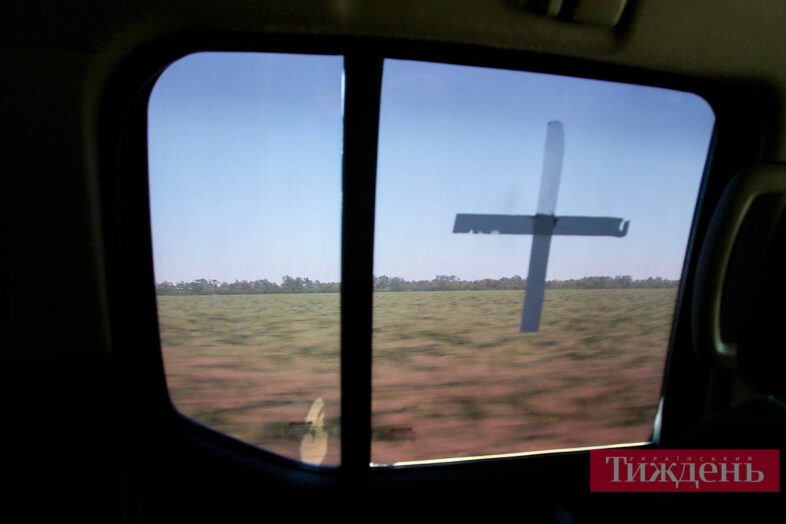
Photo: Roman Malko
There are three of us in the car: the battalion commander at the wheel, one of his fighters—David, who is ready to follow Diesel into the depths of hell—and me. Before we enter Huliaipilske, the commander gives us a tour of the local landscape. He navigates through the steppes, follows tree lines, chases after the wild rabbits, tests his new electronic warfare system, and makes a quick stop to check on the medics. Only when the sun begins to dip below the horizon does he steer towards our destination. We practically soar into the village, and if it weren’t for the fresh craters we had to dodge, the ride would have been supersonic.
The road leading to Huliaipilske is frequently targeted by shelling. A Russian drone or FPV drone is often hovering above the turnoff from the road, making speed a critical factor in our journey.
After hiding our car near a destroyed house, we make our way to the mortar team’s quarters. Although, in all fairness calling it “quarters” would be a slight exaggeration—it resembles a semi-ruined property among a cluster of similar dilapidated structures. Finding anyone amidst these ruins without knowing the exact landmarks is nearly a lost cause. However, the less conspicuous you are near the frontline, the better. The enemy closely monitors all movements in the village, making discretion a matter of safety and survival.
The enemy lies about one and a half to two kilometres away, but roaming freely is not an option. This isn’t quite the frontline yet. Somewhere ahead are positions where the soldiers operate their mortars, and beyond that are the infantry positions—the so-called “zero line” where actual fighting happens. For artillery, these three kilometres pose little challenge. “It’s best not to wander around the village,” the soldiers advise. “Just today, as soon as someone stepped outside, an FPV drone swooped in, buzzing back and forth before striking at the edge of the village. Even in the yard, when you head over to the generator, you must remain vigilant to ensure nothing is flying over your head.”
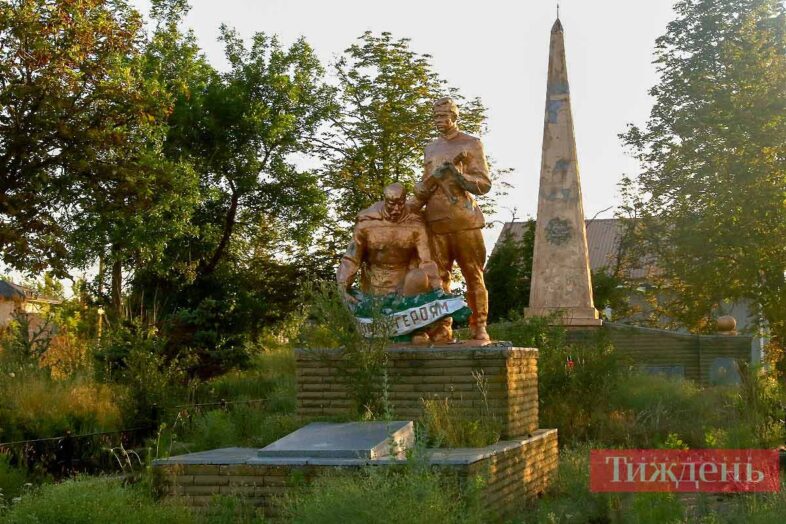
Photo: Roman Malko
Huliaipilske is a shell of its former self. While it has yet to suffer the complete devastation seen in Marinka, where Russians have created an apocalyptic landscape devoid of even the most basic refuge for a stray dog, it is no longer a village where one can truly live. At least not a life characterised by normalcy—where there is electricity, access to washing facilities, intact walls free from gaping mortar and shell holes, roofs that don’t leak (if they still exist), and where stepping outside for a stroll wouldn’t feel like an act of heroism.
Not a single house remains intact in the village. The centre lies in ruins, while the outskirts cling on by a thread. Power poles are shattered and toppled, leaving the lines severed. The nearest settlement with electricity is roughly ten kilometres away in a straight line, or closer to twenty by road. But what else can one expect when the village is subjected to daily shelling from howitzers, tanks, and mortars? Fresh craters dot the roads, visible from many kilometres away. Ultimately, all frontline villages find themselves in a similar state, making Huliaipilske’s desolation anything but unusual.
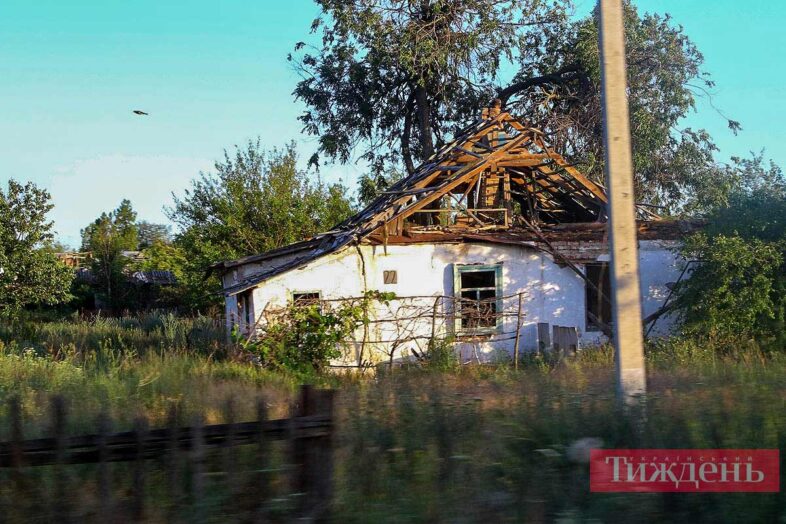
Photo: Roman Malko
Yet, even under such dire circumstances, a handful of residents manage to endure: two dozen individuals from Huliaipilske stand as a testament to that resilience. Whether this existence can truly be classified as “living” and why they have chosen to remain is likely a question without a clear answer, even for them. Those who wished to leave have long since departed. Before the war, approximately a thousand people called this village home. In the spring of 2022, it was briefly occupied, but our forces swiftly repelled the Russians, restoring control to us. However, as the reality of the village’s position on the frontline set in, most residents relocated to safer areas. Those who remain likely possess their own compelling reasons for doing so.
Ultimately, they will not be allowed to starve—neither by the soldiers defending the village nor by the volunteers who occasionally deliver humanitarian aid. “What’s interesting,” remarks one of the mortar team soldiers, “is that when humanitarian aid arrives, there’s no shelling. During the sowing season—no shelling. When they harvest the crops—no shelling.”
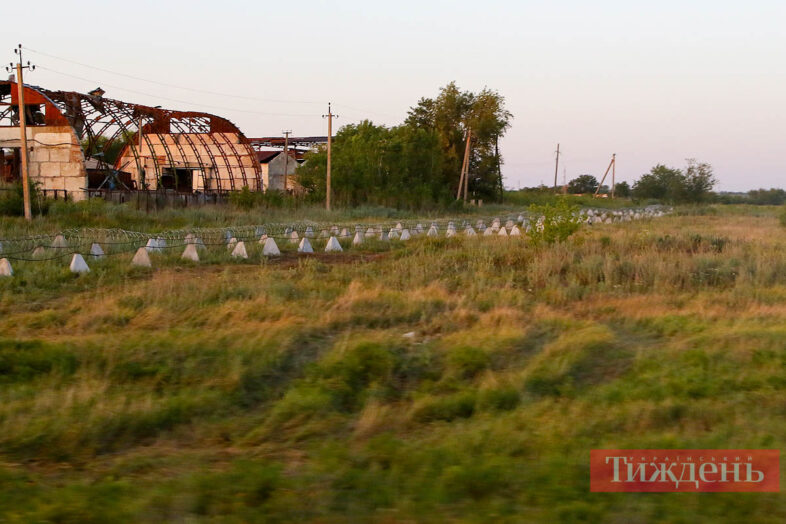
Photo: Roman Malko
Around the village, the fields are not only planted but also meticulously maintained, extending right up to the frontline. “How do they manage that?” I inquire. “Aren’t they afraid, or do they not get shot at?” “I don’t know,” the soldier shrugs. “Look, those madmen are constructing a new line directly in front of the village, erecting pyramids. Shelling is ongoing, yet they seem unfazed. They roll in with tractors and KAMAZ trucks, setting up those pyramids as if it’s business as usual. FPV drones can reach this far—they even extend to Zaliznychne and Hirke. Once, they struck a KAMAZ. Our guys managed to save one soldier’s leg, but another lost an eye. Clearly, they’ve received orders to build…”
The soldiers primarily work at night, so when we arrived, they were resting. Some were asleep, while others scrolled through their phones. Despite the village’s quietude, they remained in their bunker—a well-equipped dugout. Finding makeshift shelters, such as basements or cellars, in these villages is no easy feat; such places are worth their weight in gold. Yet, near the frontline, going underground is essential for survival. The area where the soldiers have set up their living quarters is surprisingly cosy, featuring bunk beds and bright lighting. They even have a porch where they can smoke without attracting the attention of enemy drones. To enhance their smoking experience, one of the soldiers crafted a stool from timber salvaged from mortar crates, which turned out to be a rather stylish designer piece.
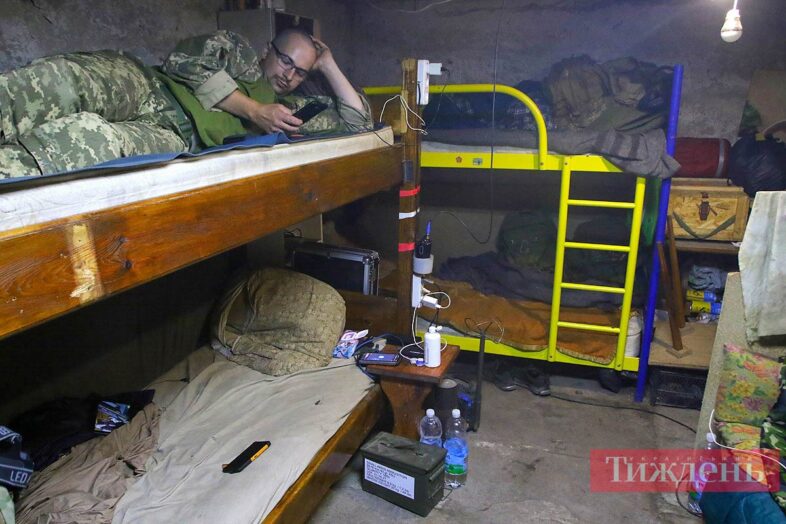
Photo: Roman Malko
In the autumn of 2023, volunteers arrived at the positions near Huliaipilske, having previously been stationed in Orikhiv, where they supported the Ukrainian Armed Forces in breaching enemy defences during the counteroffensive. Now, their operations are dictated by necessity; when the situation demands it, they strike the enemy with ferocity; when it’s quiet, they offer a silent prayer of gratitude. “Just recently, the katsapy [a colloquial derogatory term for ‘Russians’] gave us a fight,” recounts one of the fighters. “Artillery, Grads, tanks. You saw it for yourselves on the drive here—the fresh strike on the road. There’s also fresh damage near the tower in the centre. They fired at us and attempted a storm; the position launched 400 mines overnight. That’s when our SAU [self-propelled artillery unit] stepped in to retaliate.”
“They attacked from four directions within the sector of one brigade,” explains Diesel. “About 50 to 60 fighters at once. They split into smaller groups of 15 to 20 men and immediately engaged the entire brigade in combat.”
Russians frequently probe Ukrainian defences. Soldiers on other shifts have also had to fend off assaults here. The volunteers suggest that tonight could be particularly eventful, as the enemy has been amassing strength in this direction for some time, leaving open the possibility for any number of developments.
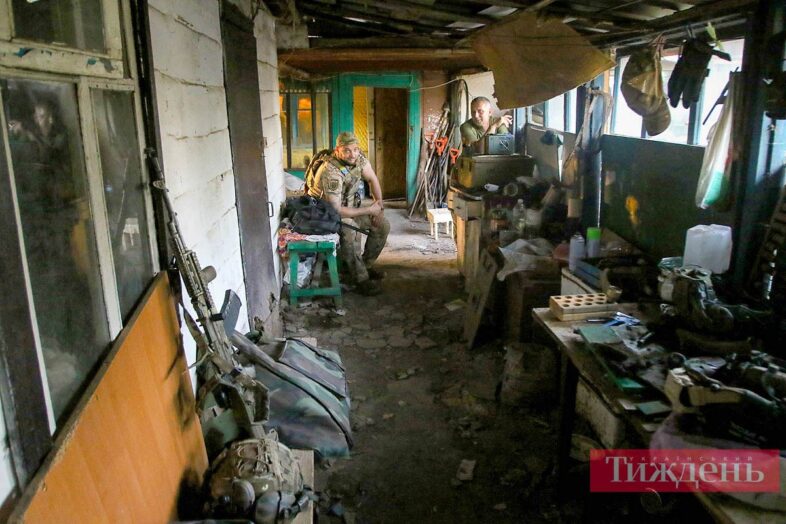
Photo: Roman Malko
As if on cue, an enemy self-propelled artillery unit (SAU) suddenly springs to life. A launch is followed by the characteristic whistle, then an explosion. While the shell is still airborne, one of the soldiers leaps up and dives headfirst into the bunker. The blast reverberates in the distance, rendering the scene almost comical. “That’s good,” the commander smiles. “The instinct for self-preservation has to be there.”
“Somewhere near the road,” one of the fighters asserts, adopting an expert tone. “Did you drive along the road? Did you see those tank obstacles? They’re probably firing at them.” “Or perhaps they’re targeting our SAU,” suggests another soldier. “It’s not far from here. They likely just hit somewhere close by.”
As the soldiers speculate on the strike’s location, another launch pierces the air. Whoosh—boom! “No idea where it’s landing. Probably three grids behind us.”
Tales of who has endured shelling and when are always uplifting, prompting the soldiers to eagerly share their experiences. After several years of war, they have accumulated enough stories to fill a book. Unfortunately, their evening of reminiscing is abruptly interrupted by yet another fresh shot…
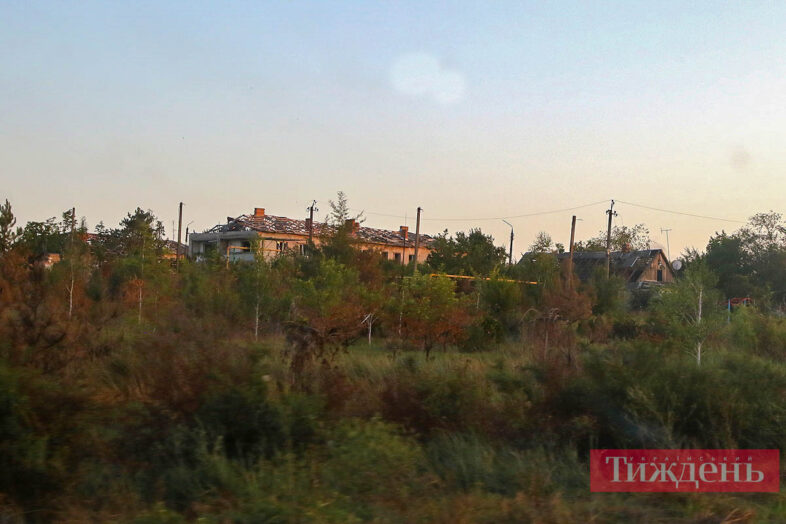
Photo: Roman Malko
“Whoosh… That’s a bad launch,” Diesel remarks, his tone shifting as he assesses the proximity. “That’s much closer. After the next arrival, if I sense it’s going to land nearer, we’ll head to the vehicle…” Boom!
“It’s a pity we don’t have eyes or a drone to strike back right now,” one of the fighters sighs.
“How long are you on shift for?” I inquire, watching as the enemy SAU reloads. “For three days. Just when you start to stink, they pull you out right away,” the soldier laughs.
Another launch interrupts our conversation. “Let’s go,” Diesel commands. We exchange hasty farewells with the soldiers and sprint outside. An explosion echoes nearby, reminding us of the urgency. We have only a few moments to reach the vehicle, climb in, start it up, and make our escape.
“There were two saushkas” [a colloquial term for ‘self-propelled artillery’], the commander says, pressing on the gas. “One is firing farther out—beyond the prohibition zone—and the other is targeting our position. They’re working in the area where the medics live. We’ll need to contact them and see if everything’s okay.” At speed, he navigates a crater, slows down a bit as he takes a turn, and then accelerates again. The drone locator beeps frantically. I try to take photos the whole time, but the vehicle shakes violently, making it nearly impossible.
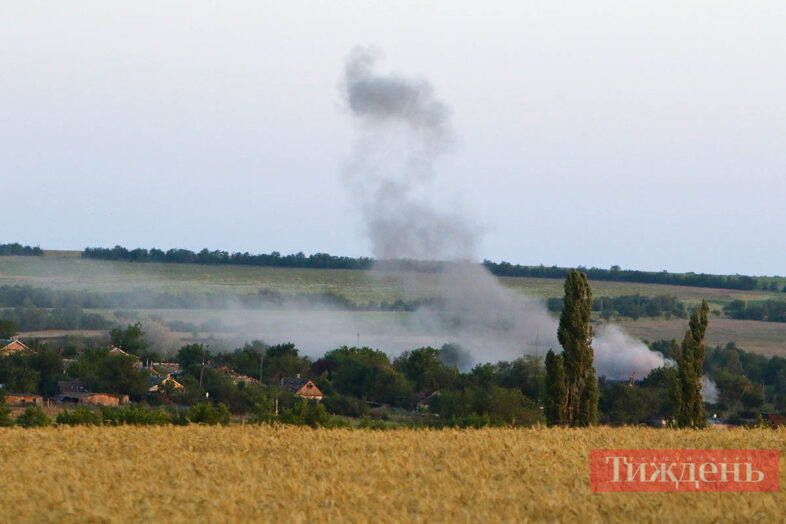
Photo: Roman Malko
“There! There’s a column of smoke,” Diesel points out as we reach a straight stretch, easing off the accelerator for a moment to allow me to capture the shot.
“You’ve got quite a job,” I remark, “not exactly thrilling.”
“It’s quite alright,” the commander replies with a chuckle, steering the vehicle back onto a dirt road and sending up a cloud of dust. “Let’s keep moving…”

